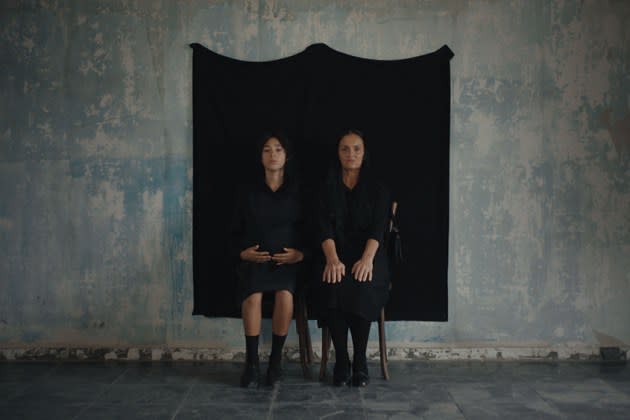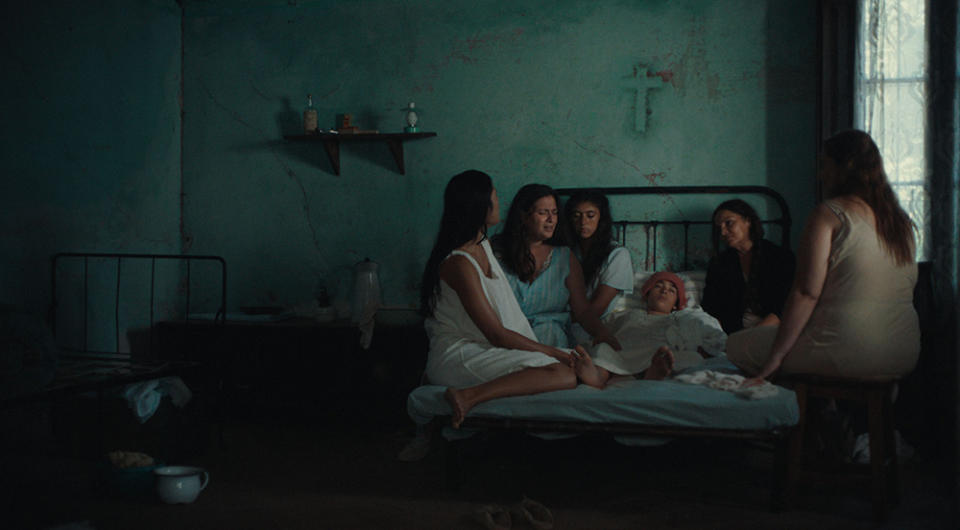Cannes Discovery Award Winner Laura Ferrés Brings Debut Feature to Locarno Competition

Following Goya and Catalan Gaudi prize wins for short “The Disinherited” which also won a Cannes Discovery Award, Laura Ferrés’ debut feature “The Permanent Picture” is setting its sights on the Golden Leopard at the Locarno Film Festival.
Drawing from a rich tapestry of personal and historical narratives, Ferrés showcases her distinctive approach to storytelling, blending dry humor and captivating cinematography with a resonant narrative.
More from Variety
The film is a journey through the lives of migrants who moved from Andalusia to Catalonia, inspired by the director’s own grandmother’s post-war experiences. Coupling real elements with fictional constructs, the film strikes a delicate balance between naturalism and artifice.
It opens in rural Southern Spain. We meet Antonia, played by Rosario Oretega, a teenager pushing against convention. In the opening moments she is challenged that those who can’t control themselves can’t be pretty, to which her retort is “Who said I wanted to be pretty?” Having become a teenage mother, Antonia, disappears in the middle of the night, leaving her baby behind. 50 years later and much farther North, Carmen, an introverted casting director, seeks people to share their experiences when arriving in a new city. Carmen encounters an older woman, selling perfume on the street, who could be perfect casting for her. This woman’s impulsiveness will intrude into her loneliness and include elliptical echoes to Antonia’s story. The Catalan filmmaker describes the film as a “depressing comedy.”
The film does not shy away from the harsh realities of work and life, presenting a candid portrayal of the challenges and precariousness associated with employment. It also explores the idiosyncrasies of different eras, offering a deep dive into the social, cultural, and political dynamics of Spain. The dry humour often stems from Carmen, played with deadpan aplomb by Maria Luengo.
“The real elements are camouflaged because we need fiction in our lives, and the desire for fiction is not only in cinema, but also in music, in oral histories, in superstitions, in poetry. All of that is in the film because ‘The Permanent Picture’ is a story within a story about a woman chasing another woman keen for adventures,” Ferres told Variety.
This carefully-crafted tale incorporates a mix of non-professional actors, creating a sense of authenticity that is also playfully unpicked within the plot. It underscores Ferrés’ commitment to an unconventional approach, grounding the film in the realities of life while still allowing the imagination to roam free.
Ferrés’ debut feature has been acquired by Be For Films and was produced by Spain’s Fasten Films, in co-production with Le Bureau (France), and Materia (Spain).
Ferrés co-wrote the film with celebrated Spanish auteur Carlos Vermut, a San Sebastian Golden Shell winner with 2014’s “Magical Girl” and Ulises Porra, who won San Sebastian’s New Directors Award in 2021.

Variety caught up with Ferres prior to Locarno…
The film takes inspiration from the stories of workers who migrated from Andalusia to Catalonia. Can you speak to how these real-life narratives influenced your approach to storytelling in the film?
Making a film is an opportunity to preserve real elements but shaping them at will to create a better truth. As I am interested in this confluence between anthropology and fiction, the storytelling is balanced between naturalism and artifice.
I grew up with my grandmother who came from Andalusia to Catalonia in post-war Spain. Her context was similar to Antonia’s, but instead this main character does WTF she wants. My grandmother sang very well, but she had to work in the fields and take care of her brothers. She sang mostly “coplas” and Republican songs that appear in the film. Luckily my mother and I recorded them on a cassette before my grandmother lost her memory because there is no trace of them even on the Internet.
I’d also like to highlight another real element introduced in the film: an advertisement from the pharmaceutical company Bayer with Our Virgin of Carmen to sell aspirins when Catholicism was imposed during the post-war. Although the film also portrays today’s advertising world to see how the Catholic religion has been supplanted by the religion of the market. However, the film tries to avoid moral judgments, and even embraces taboos.
The use of non-professional actors is a distinctive choice. Could you expand on that?
The challenge was that I was not able to rehearse with them, and still they are awesome. The reward is a set of unique faces and linguistic accents that indeed transmit authenticity, but some dialogues and reactions are not naturalistic because as I mentioned before: I am interested in building an imaginary based on real elements. Portraying an imaginary universe is a way of being free from conventions. And even so that does not mean escapism because it tells us things about the idiosyncrasy of an era.
I also chose non-professional actors because the film is also about a woman who must find “authentic” people for a political campaign. Although authentic is a euphemism for poverty in the film. I do not romanticize the world of work: the epic about getting or keeping a job in some films is conservative to me. We need to pay our bills, but I prefer to portray how working is alienating and precarious as a reflection of my work experiences. I actually worked as a casting director like the other main character, Carmen.
There is a striking balance of darkness, tenderness, dry humour, and music in the film. How do these elements come together to create the film’s unique tone, and how do they reflect your influences as a filmmaker?
Not all decisions are rational, and some elements appear just because they respond to my way of being in the world. But since you ask, humor saves me, and I am a music lover: as I said before, I heard singing at home since I was little. Darkness and tenderness are some of the dualities on which the film works so the unexpected appears when these opposites meet.
I am also a cinephile, and my influences are varied: my mother showed me classic films; my father, blockbusters; my grandmother, soap operas; and I discovered anime, non-fiction and non-narrative cinema on my own. Then making a melodrama was an option that mixes almost all, and it also enables me to introduce the notion of forbidden desire. But once I make a film, I prefer to be influenced by other artistic expressions: David Foster Wallace’s essays, “Los Detectives Salvajes” by Roberto Bolaño, Caryl Churchill’s play “Top Girls,” and “A Day In The Life” by the Beatles, among other things. They all have structures that fascinate me.
The film presents various dualities – country/city, past/present, artifice/naturalism. How do these dualities reflect the current state of Spain, particularly in terms of its social and political dynamics?
I guess all this reflects that people from other backgrounds are making films. As in all areas, the 2008-2014 crisis was devastating for Spanish film production. Some directors made films with a few means, like myself in “The Disinherited.” But they turned that lack of means into a virtue and a declaration of intent. So, some of them also portray the countryside or peripheral cities, and work with non-professionals actors. Therefore they also portray different languages or linguistic accents, and social classes. I suppose that is why naturalism predominates in these films, although I feel that artifice will be developed in the coming years precisely as a reaction to this naturalism.
Best of Variety
Sign up for Variety’s Newsletter. For the latest news, follow us on Facebook, Twitter, and Instagram.

